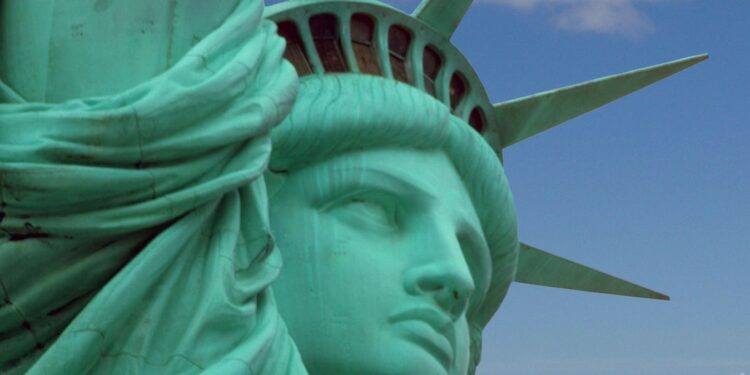Table of Contents
- 1 What is the cultural and historical significance of Chaco Culture as a UNESCO World Heritage Site?
- 1.1 The Grand Canyon
- 1.2 Statue of Liberty
- 1.3 Yellowstone National Park
- 1.4 Monticello and the University of Virginia in Charlottesville
- 1.5 Hawai’i Volcanoes National Park
- 1.6 Chaco Culture
- 1.7 Independence Hall
- 1.8 Everglades National Park
- 1.9 Mesa Verde National Park
- 1.10 The Great Smoky Mountains National Park
- 1.11 Get Out and Explore
What is the cultural and historical significance of Chaco Culture as a UNESCO World Heritage Site?
The United States is home to a wealth of cultural and natural wonders, including many sites that have been recognized by the United Nations Educational, Scientific and Cultural Organization (UNESCO) as World Heritage Sites. These sites are considered to have outstanding universal value and are protected and preserved for future generations. From iconic landmarks to hidden gems, there are 24 World Heritage Sites in the U.S., offering a diverse range of experiences for travelers to explore. So, how many of these incredible places have you checked off your list? Let’s take a closer look at some of these remarkable sites and how you can make the most of your visit.
The Grand Canyon
The Grand Canyon, located in Arizona, is one of the most famous natural wonders in the world. Spanning over 1.2 million acres, the canyon is a breathtaking sight to behold, with its layered bands of red rock revealing millions of years of geological history. Visitors can take in the stunning vistas from the South Rim or explore the more remote North Rim. For the more adventurous, hiking, rafting, and helicopter tours offer a unique perspective of this awe-inspiring landscape.
Statue of Liberty
A symbol of freedom and democracy, the Statue of Liberty in New York City is an iconic monument that attracts millions of visitors each year. A gift from the people of France to the United States, the statue stands tall on Liberty Island, overlooking the New York Harbor. Visitors can take a ferry to the island to get an up-close view of this historic monument and learn about its significance at the onsite museum.
Yellowstone National Park
Yellowstone National Park, located in Wyoming, Montana, and Idaho, is the first national park in the world and a UNESCO World Heritage Site. Known for its geothermal wonders, including the Old Faithful geyser, colorful hot springs, and bubbling mud pots, the park offers a unique glimpse into the powerful forces of nature. Wildlife enthusiasts will also be delighted by the chance to spot bison, elk, wolves, and bears roaming the park’s diverse landscapes.
Monticello and the University of Virginia in Charlottesville
Designed by the third President of the United States, Thomas Jefferson, Monticello is a masterpiece of architecture and landscaping. Visitors to this UNESCO World Heritage Site can tour Jefferson’s home, explore the gardens, and learn about his lasting impact on American history. Just a few miles away, the University of Virginia, also designed by Jefferson, showcases his vision for American higher education and is a testament to his enduring legacy.
Hawai’i Volcanoes National Park
The Hawai’i Volcanoes National Park, located on the Big Island of Hawai’i, is a living laboratory of volcanic activity. Visitors to this World Heritage Site can witness the drama of Kīlauea and Mauna Loa, two of the world’s most active volcanoes, shaping the island’s landscape. Hiking trails lead to lava tubes, craters, and other geological wonders, while the Jaggar Museum provides insight into the nature of volcanic activity and its impact on the environment.
Chaco Culture
Chaco Culture, located in New Mexico, is an exceptional example of the architectural achievements of the ancient Pueblo people. The monumental buildings and ceremonial structures at Chaco Canyon reflect the sophisticated understanding of astronomy, geometry, and engineering of its builders. Visitors can explore the intricate masonry and scientific knowledge of this pre-Columbian culture, as well as the surrounding canyon landscape, which continues to hold spiritual significance for Native American tribes today.
Independence Hall
Independence Hall in Philadelphia, Pennsylvania, is where the Declaration of Independence and the United States Constitution were debated and adopted, shaping the course of American history. A UNESCO World Heritage Site, the hall offers guided tours that provide insight into the founding principles of the nation and the pivotal events that took place within its walls. Nearby, the Liberty Bell, an enduring symbol of freedom, is also worth a visit.
Everglades National Park
The Everglades, located in Florida, is the largest tropical wilderness of any kind in the U.S. and a UNESCO World Heritage Site. This unique ecosystem is home to a diverse array of wildlife, including alligators, manatees, and an incredible variety of bird species. Visitors can explore the park’s wetlands by airboat, kayak, or hiking trails, immersing themselves in the natural beauty and ecological importance of this vital habitat.
Mesa Verde National Park
Mesa Verde, located in Colorado, preserves the ancient cliff dwellings of the Ancestral Pueblo people, who inhabited the area for over 700 years. A UNESCO World Heritage Site, the park offers a fascinating glimpse into the cultural and architectural achievements of these early inhabitants, with guided tours providing insight into their daily lives and the significance of the well-preserved structures that cling to the canyon walls.
The Great Smoky Mountains National Park
The Great Smoky Mountains, straddling the border of North Carolina and Tennessee, is a UNESCO World Heritage Site and a haven for outdoor enthusiasts. With over 800 miles of hiking trails, stunning waterfalls, and diverse plant and animal life, the park offers endless opportunities for exploration and adventure. Scenic drives, historic buildings, and cultural heritage sites add further depth to the experience of this natural wonder.
Get Out and Explore
With so many World Heritage Sites to discover in the U.S., there’s no shortage of remarkable places to add to your travel bucket list. Whether you’re drawn to the natural beauty of the Grand Canyon and Yellowstone, the historic significance of Independence Hall and Monticello, or the cultural richness of Chaco Culture and the Great Smoky Mountains, each site offers a unique and enriching experience.
So, how many of these extraordinary places have you checked off your list? Whether you’re a seasoned traveler or just beginning to explore the world, there’s no better time to start planning your next adventure. From ancient ruins to modern marvels, the U.S. offers an incredible array of World Heritage Sites just waiting to be discovered. So, pack your bags, hit the road, and enrich your life with the wonders of the world right here in your own backyard.
An Iconic American Gift: The Statue of Liberty & Other UNESCO World Heritage Sites
A special gift from France to commemorate 100 years of American independence, the Statue of Liberty stands tall, overlooking New York Harbor. Numerous iconic landmarks such as the Egyptian pyramids, Roman Colosseum, Stonehenge, and the mysterious heads on Easter Island are recognized as UNESCO World Heritage Sites due to their cultural, natural, or historical significance for humanity. This designation is held by nearly 1,200 sites spread across 168 countries and all continents. Italy has the highest number of designations, followed by China, France, Germany, Spain, and India.
The United States is home to 25 UNESCO World Heritage Sites, located in 21 different states and Puerto Rico. These sites fall into four main categories: nature, history, Native American, and a special architecture category, including the work of a single individual.
Natural Attractions
Fourteen U.S. national parks have been designated as World Heritage Sites. From Wrangell-St Elias in Alaska to the Everglades in Florida, and from Hawaii Volcanoes to the Great Smoky Mountains in North Carolina and Tennessee, these parks showcase significant geological phenomena and processes and provide a unique manifestation of geothermal forces, natural beauty, and wild ecosystems. Yellowstone and Mesa Verde were among the first sites to earn the UNESCO distinction. While Yellowstone’s designation highlights the geological and natural beauty of the park, Mesa Verde offers exceptional archaeological sites that provide testimony to ancient cultural traditions of Native American tribes.
American History
Several iconic American structures have been recognized as World Heritage Sites, including Independence Hall in Philadelphia, the birthplace of the Declaration of Independence and U.S. Constitution. The Statue of Liberty, a gift from France to commemorate American independence, was recognized as a World Heritage Site in 1984. Additionally, Thomas Jefferson’s Monticello and the “Academic Village” at the University of Virginia, the San Antonio Missions in Texas, and La Fortaleza and Old San Juan in Puerto Rico represent significant cultural heritage.
Native American Heritage
A quarter of the nation’s UNESCO World Heritage Sites represent Native American heritage. The Mesa Verde cliff dwellings, Taos Pueblo, relics associated with the Chaco Culture in New Mexico, and other significant sites in Ohio, Louisiana, and Missouri exemplify the architectural and cultural significance of Native American culture.
Frank Lloyd Wright
In a rare distinction, legendary architect Frank Lloyd Wright is responsible for creating an entire World Heritage Site. The 20th Century Architecture of Frank Lloyd Wright site includes eight of his masterpieces in six states, such as the Guggenheim Museum, Fallingwater house, and Taliesin West. Wright’s work is celebrated for its innovation, sophistication, and unique architectural style.
With the rich heritage of the United States, there is much to explore and appreciate within the country’s UNESCO World Heritage Sites.





